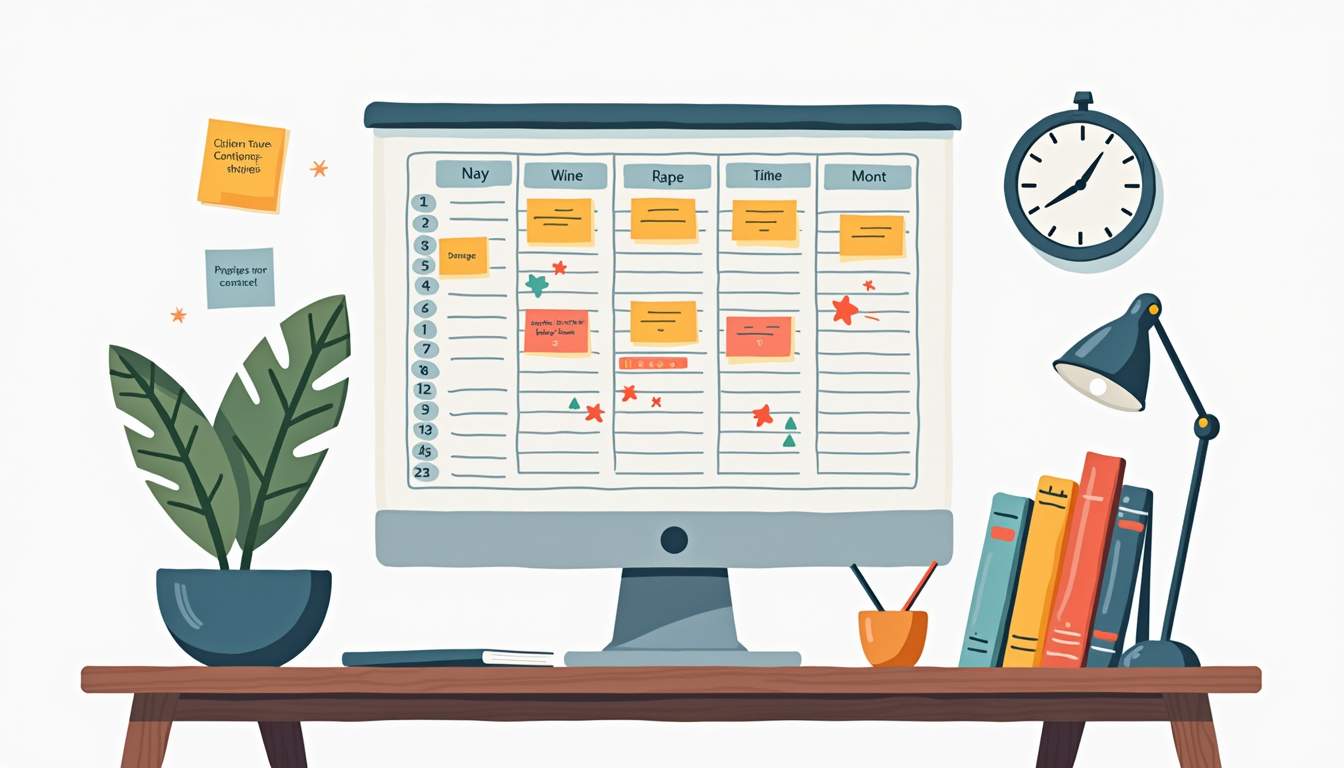In the fast-paced world of real estate, your attention is constantly pulled in multiple directions. Between updating listings, coordinating showings, and maintaining client relationships, it’s easy to feel overwhelmed. But what separates top-performing agents from the rest isn’t just hustle—it’s focused, intentional work. Let’s dive into practical strategies to help you manage your attention and boost your productivity in this demanding industry.
The Real Estate Focus Challenge
Real estate agents face unique productivity challenges. Your office might be your car, your schedule rarely follows a 9-to-5 pattern, and client needs can arise at any moment. According to the National Association of Realtors, the average agent juggles 12-15 active clients at once. That’s a lot of balls in the air!

The constant context-switching between listing presentations, showings, paperwork, and follow-ups creates what productivity experts call “attention residue”—where your mind remains partially stuck on previous tasks even as you move to new ones. This fragmented focus can reduce your effectiveness by up to 40% according to research from the University of California.
The Cost of Distraction
Every time you switch from updating an MLS listing to answering a client text, then jump to scheduling a showing before returning to that listing, you’re paying a cognitive tax. Studies show it takes an average of 23 minutes to fully refocus after an interruption. For real estate agents, these interruptions aren’t just occasional—they’re constant.
This scattered attention doesn’t just slow you down; it increases errors in contracts, missed details in client communications, and forgotten follow-ups that could cost you referrals or even deals. The financial impact of poor focus can be substantial in an industry where a single transaction represents thousands in commission.
Time Blocking for Real Estate Success
Time blocking is particularly effective for real estate professionals. Instead of reacting to every notification and request as it comes in, carve your day into dedicated chunks for specific activities. This approach transforms your schedule from reactive to proactive.

Creating Your Ideal Real Estate Schedule
Start by identifying your high-value activities—prospecting, showing properties, negotiating deals—and schedule these during your peak energy hours. For many agents, mornings are ideal for proactive work like lead generation, while afternoons work well for showings and client meetings.
A sample time-blocked schedule might look like this:
- 7:00-9:00 AM: Prospecting and lead follow-up calls
- 9:00-10:30 AM: MLS updates and listing work
- 10:30-12:00 PM: Administrative tasks and paperwork
- 12:00-1:00 PM: Lunch and email management
- 1:00-5:00 PM: Property showings and client meetings
- 5:00-6:00 PM: End-of-day follow-ups and planning
The Pomodoro Technique for Real Estate Tasks
The Pomodoro Technique is a game-changer for real estate professionals dealing with administrative work. Using a tool like Focus Keeper, you work in focused 25-minute sprints followed by 5-minute breaks. After completing four “pomodoros,” you take a longer 15-30 minute break.
This technique is perfect for tackling those necessary but often-procrastinated tasks like updating CRM data, writing property descriptions, or organizing transaction paperwork. Focus Keeper’s timer and tracking features help you maintain accountability and see patterns in your productivity over time.
Batch Processing Similar Tasks
Grouping similar activities reduces the mental load of context-switching. For example, schedule a dedicated hour for all your listing photography reviews, another block for all client check-in calls, and another for contract reviews. This approach leverages your brain’s tendency to find efficiency in repetition.
Many top-producing agents report saving 5-7 hours weekly simply by batching similar tasks instead of handling them as they arise throughout the day.
Digital Organization for Listing Management
The average agent manages multiple listings simultaneously, each with its own marketing materials, showing feedback, and documentation. Without a system, crucial details fall through the cracks.
Creating a Digital Hub for Each Property
Establish a centralized digital folder structure for each listing that includes subfolders for photos, marketing materials, showing feedback, and transaction documents. Cloud-based solutions like Dropbox, Google Drive, or your brokerage’s transaction management system make these files accessible whether you’re in the office or on the road.
Pro tip: Use a consistent naming convention for all files related to a property (e.g., “123Main_St_Photos” rather than just “Photos”). This simple habit saves countless minutes of searching and reduces mental friction when switching between listings.
Client Communication Management
Client relationships are the lifeblood of real estate success, but managing communications across dozens of active and past clients can quickly become overwhelming.

Setting Communication Boundaries
While real estate often requires extended availability, establishing some boundaries preserves your focus and prevents burnout. Communicate your “office hours” to clients, letting them know when they can expect immediate responses versus slightly delayed replies. Most clients respect these boundaries when they’re clearly explained upfront.
Consider using Focus Keeper’s timer to implement communication “sprints” where you dedicate 25-minute blocks solely to client responses, followed by periods of uninterrupted work on other priorities. This balanced approach ensures clients feel attended to without sacrificing your productivity.
Automating Follow-Ups
Use your CRM to create automated follow-up sequences for different client categories: active buyers, active sellers, past clients, and prospects. These might include market updates, check-in messages, or anniversary congratulations for past purchases.
Even with automation, personalization matters. Block time each week to add personal notes to these automated messages. This hybrid approach ensures consistent communication while maintaining the human touch that builds lasting relationships.
Mindfulness Practices for Real Estate Professionals
The constant pressure of real estate can create a perpetual state of mental chatter that undermines focus. Incorporating brief mindfulness practices throughout your day can reset your attention and reduce stress.
Focus Keeper’s structured work/break cycles provide natural opportunities for these reset moments. During your 5-minute breaks, try a quick breathing exercise: inhale for 4 counts, hold for 2, exhale for 6. This simple practice activates your parasympathetic nervous system, reducing stress hormones and improving mental clarity before your next focused work session.
Remember, in real estate, your attention is your most valuable asset. By implementing these focused work strategies, you’ll not only manage your listings, showings, and follow-ups more effectively—you’ll also experience greater satisfaction and sustainability in your career. Your clients will notice the difference in your organized, attentive service, and your business will reflect it in closed deals and referrals.





